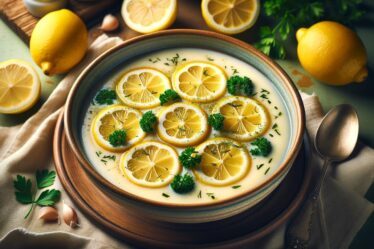
Delving into the heart of traditional Italian cuisine reveals a dish that encapsulates the simplicity and ingenuity of rustic cooking—the Panzanella salad. This not-so-ordinary salad began its journey as a peasant’s meal within the rolling hills of Tuscany, where the brilliance of Italian cooks transformed stale bread and ripe garden vegetables into a savory symphony of flavors. Panzanella embodies the values of frugality and freshness, its evolution from a local Tuscan staple to an internationally acclaimed delicacy mirroring the way culinary traditions can transcend borders and eras, much like a beloved folktale that finds new listeners in every generation.
The History of Panzanella
The Wholesome Evolution of Panzanella: From Tuscan Roots to Table Favorite
In the sun-drenched hills of Tuscany, a humble peasant dish rose to prominence, captivating the gastronomic world with its vibrant hues and rustic charm. Panzanella, a beloved Italian salad, began its journey as a thrifty way to salvage stale bread. It’s a testament to the beauty of simplicity in cooking—a dance of resourcefulness and flavor that transforms mere leftovers into a culinary masterpiece. Back in the day, resourceful Tuscan farmers, loath to waste, found magic in mingling day-old bread with the juiciest tomatoes, fresh basil, slivers of red onion, and a hearty drizzle of olive oil. The bread, once hard as a rock, soaks up the flavors and dressing, blossoming into tender chunks that make each bite a delight.
What was once a feast born of frugality has blossomed into a versatile and refreshing staple of modern cuisine. Over time, Panzanella adopted new ingredients, embracing seasonal vegetables like cucumbers and bell peppers, to become a canvas for local produce at its peak. It’s a dish that yearns for improvisation; an exploration of texture and taste that allows for the interplay of tangy balsamic vinegar and rich olive oils or the surprise crunch of a toasted pine nut amidst soft, flavor-soaked bread. Every iteration speaks to the ingenuity that can be found within the bounds of tradition, inviting an endless variety of interpretations on restaurant menus and dinner tables alike.
Today, Panzanella is more than just a salad; it’s a celebration of community and history, a dish that tells the story of its origins with every colorful, delectable spoonful. It’s a testament to the fact that food is never static; it evolves with us, carrying the heart of generations past into the bustling kitchens of today’s culinary adventurers. Whether enjoyed in an Italian trattoria or lovingly tossed together at home, Panzanella is a reminder that sometimes, the most extraordinary flavors are born from the simplest of beginnings.

Creating the Perfect Panzanella
Harnessing the simplicity of Panzanella requires one to embrace the highest-quality ingredients.
Think luscious, vine-ripened tomatoes, bursting with sunshine and sweetness, hand-selected for ripeness and flavor.
Perfection in this rustic salad depends on the tomatoes, as they lend their vibrant juice and character to the dish.
Be sure not to drench the bread; rather, let it bask in the tomato’s essence, absorbing the love song of flavors patiently.
Then, there’s the bread itself—a character actor waiting for its cue.
A robust, crusty loaf, slightly charred from a dance with the grill, can introduce a smokey nuance that elevates the entire experience.
Another secret lies in the celebration of contrasts—a dance of textures and tastes that make each bite a tiny festival on the tongue.
Additions should complement, not overshadow.
The crunch of cucumber against the silk of high-quality extra virgin olive oil; the bright spark of capers or anchovies for a hit of salty umami.
These bursts of flavor inject an unexpected twist, transforming the dish from good to breathtaking.
And let’s not forget about the herbs!
Basil should be bountiful and fresh, torn with reverence, never bruising its delicate leaves.
It’s the whisper of mint, though, that can be the final wink—the subtle, fragrant magic that prompts closed eyes with the first taste.
In the end, the alchemy of Panzanella is in its balance and respect for every element.
The key? Use the senses as guides—touch, taste, sight, and smell intertwine to capture the meal’s soul.
Whether served up in a bistro under the Tuscan sun or lovingly crafted in a home kitchen, the salad stands as a testament to the joy of good food shared.
Bring friends, laughter, and an appetite to the table, for Panzanella is more than a meal—it’s a vibrant, edible embrace.

With each forkful of Panzanella, one not only savors the harmonious interplay of well-chosen, vibrant ingredients but also partakes in a centuries-old story that continues to unfold in kitchens around the world. Far more than a mere medley of flavors, Panzanella stands as a testament to the enduring allure of Italian cuisine and the universal language of food that speaks across cultures. It’s a reminder that the most enduring dishes are often the simplest, and that in the world of gastronomy, the past is an integral ingredient in the feast of the present.



